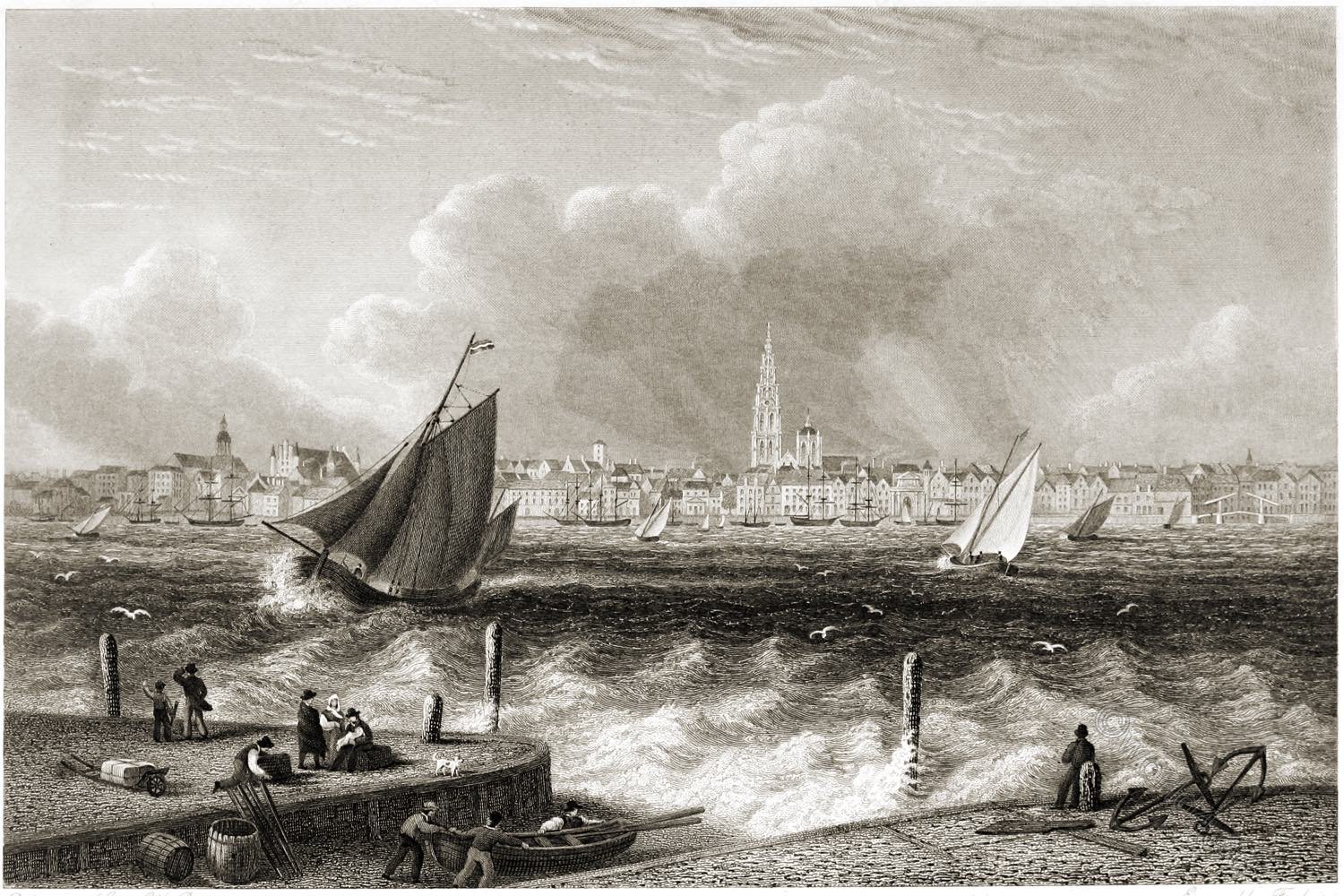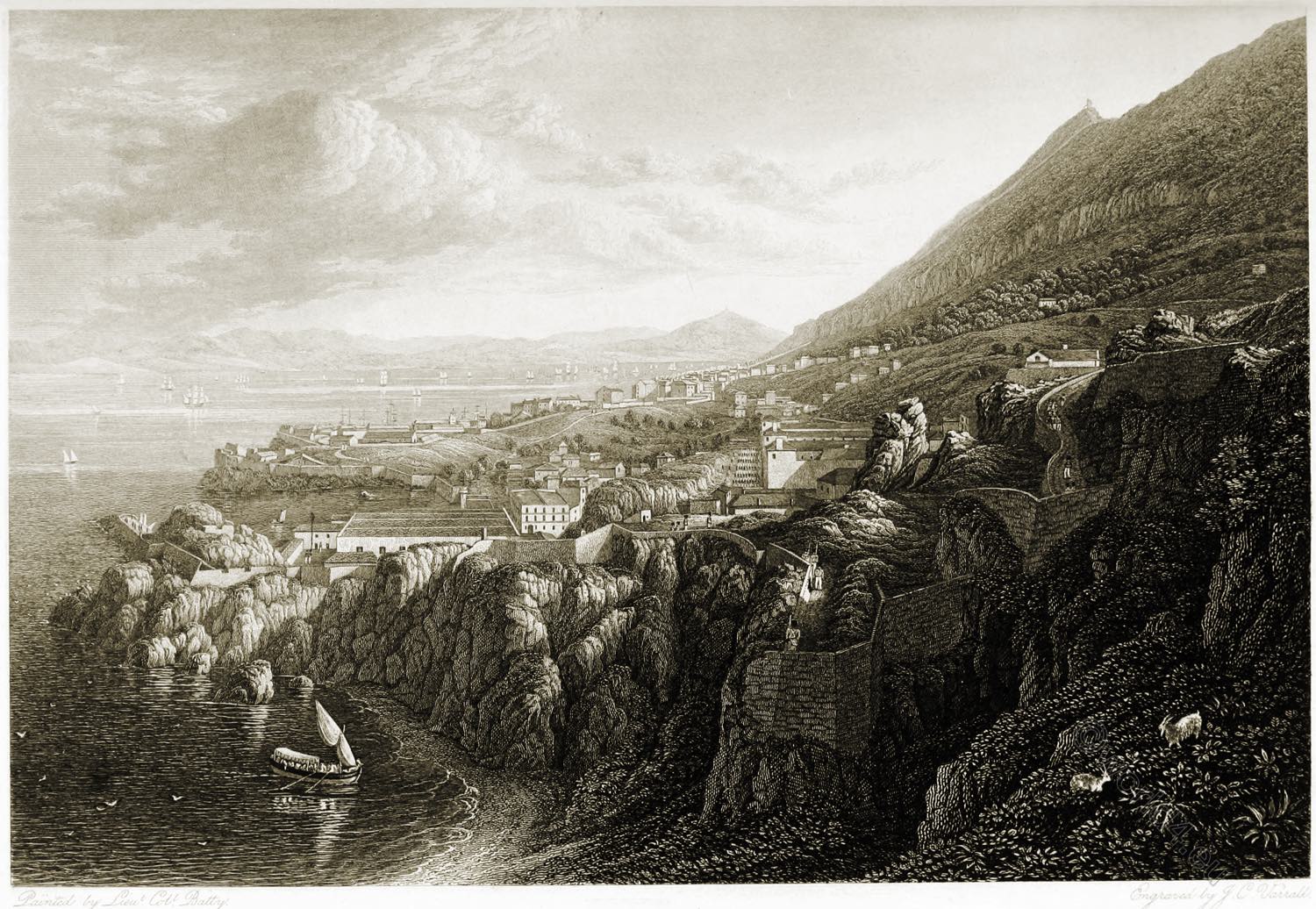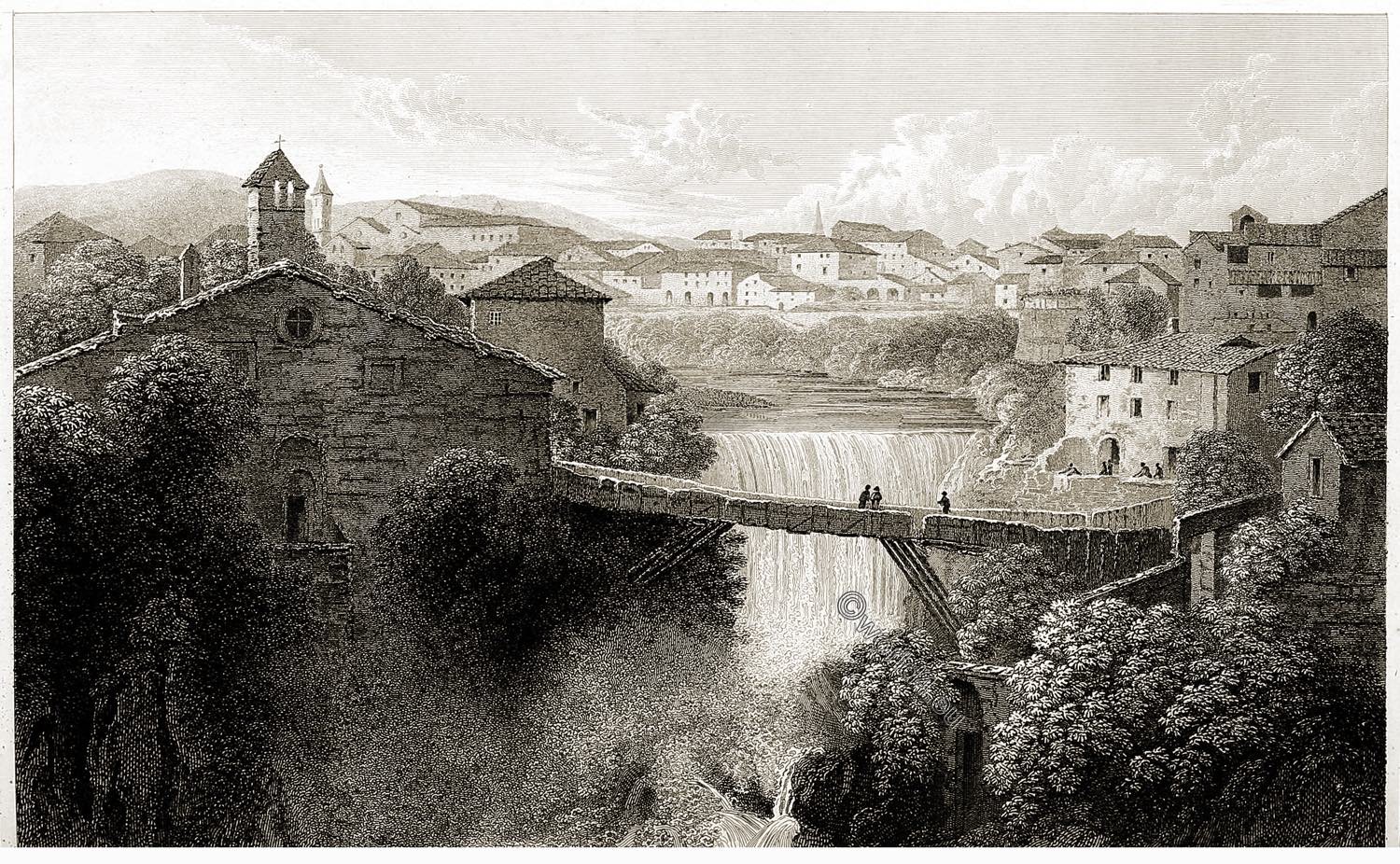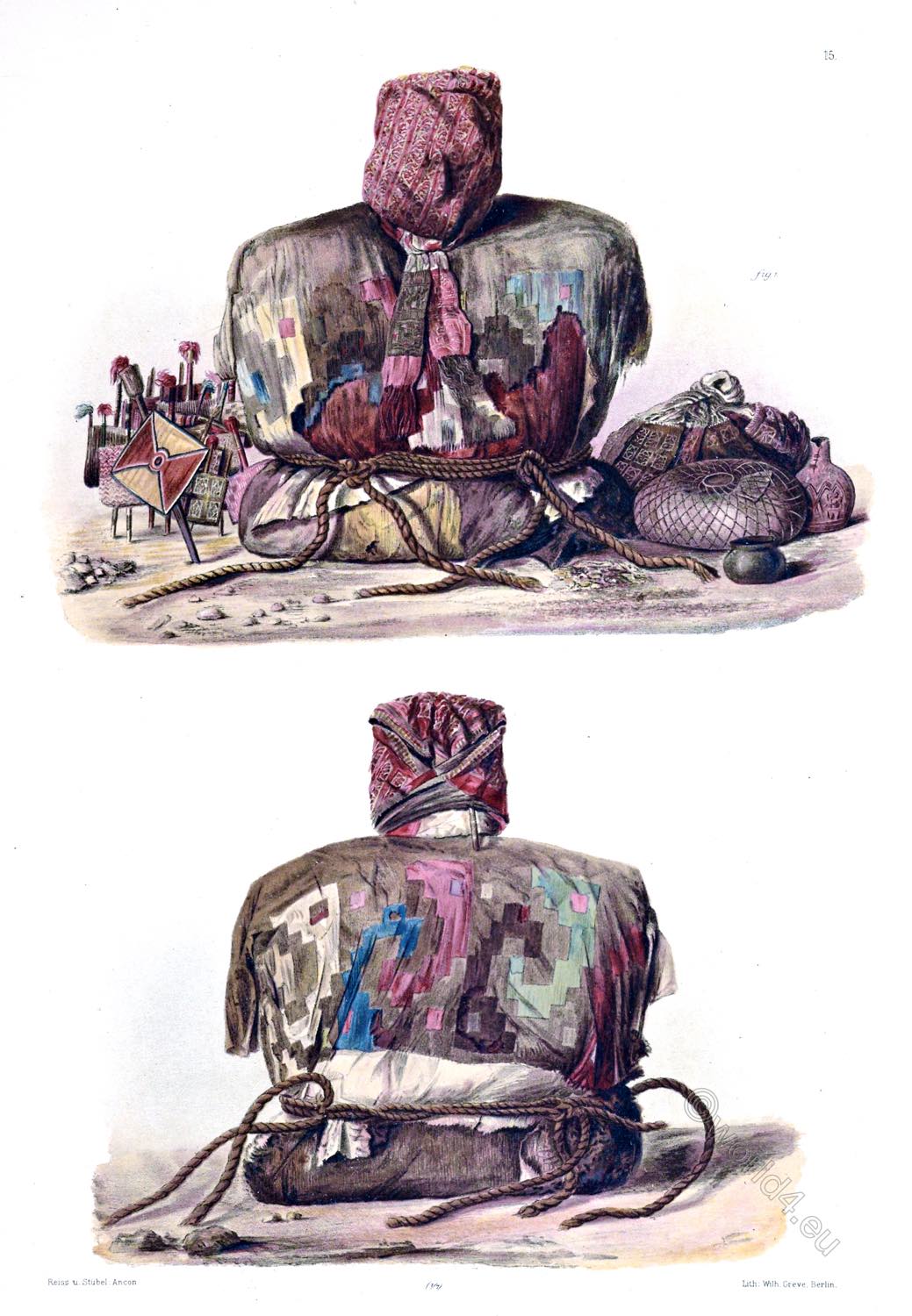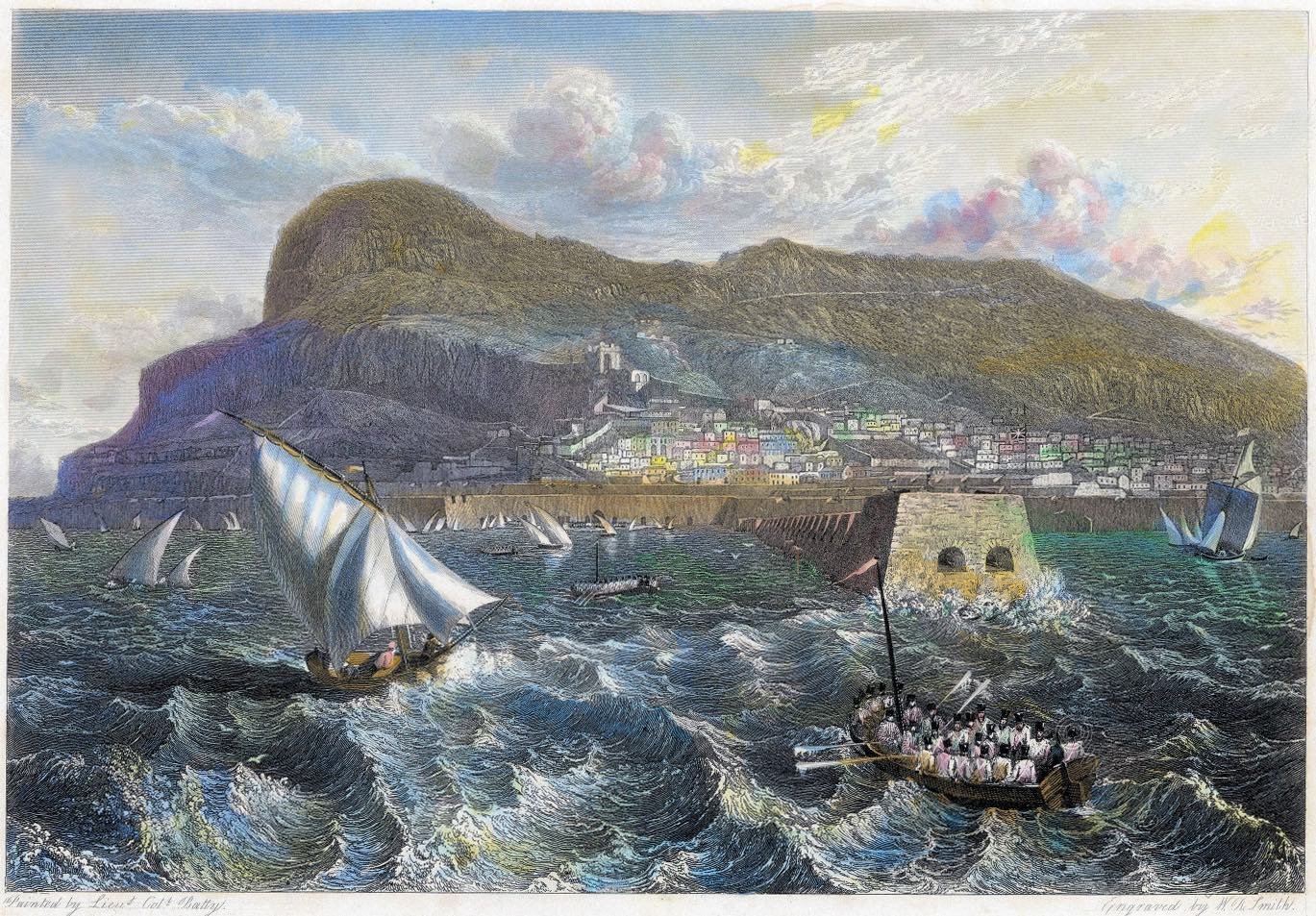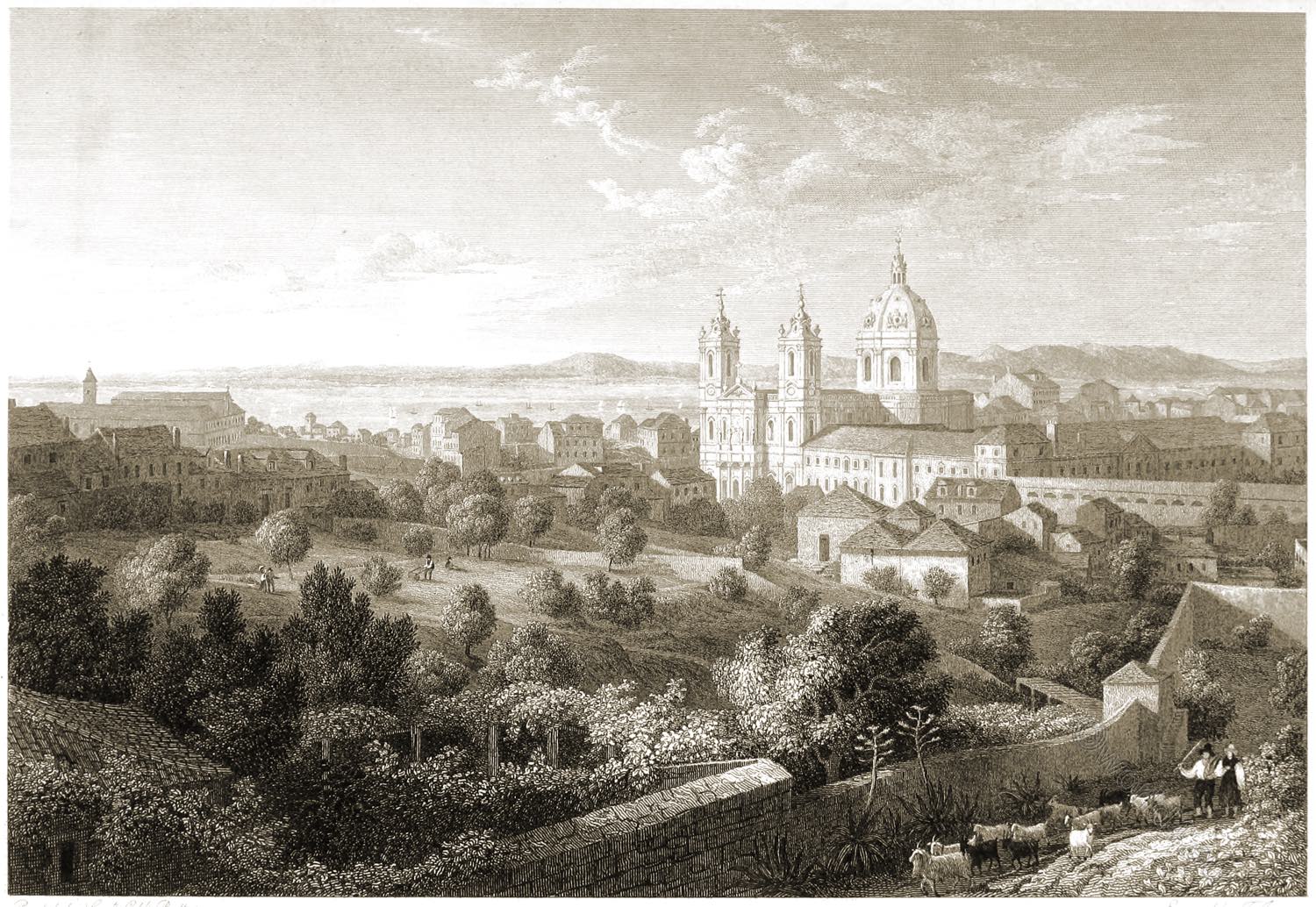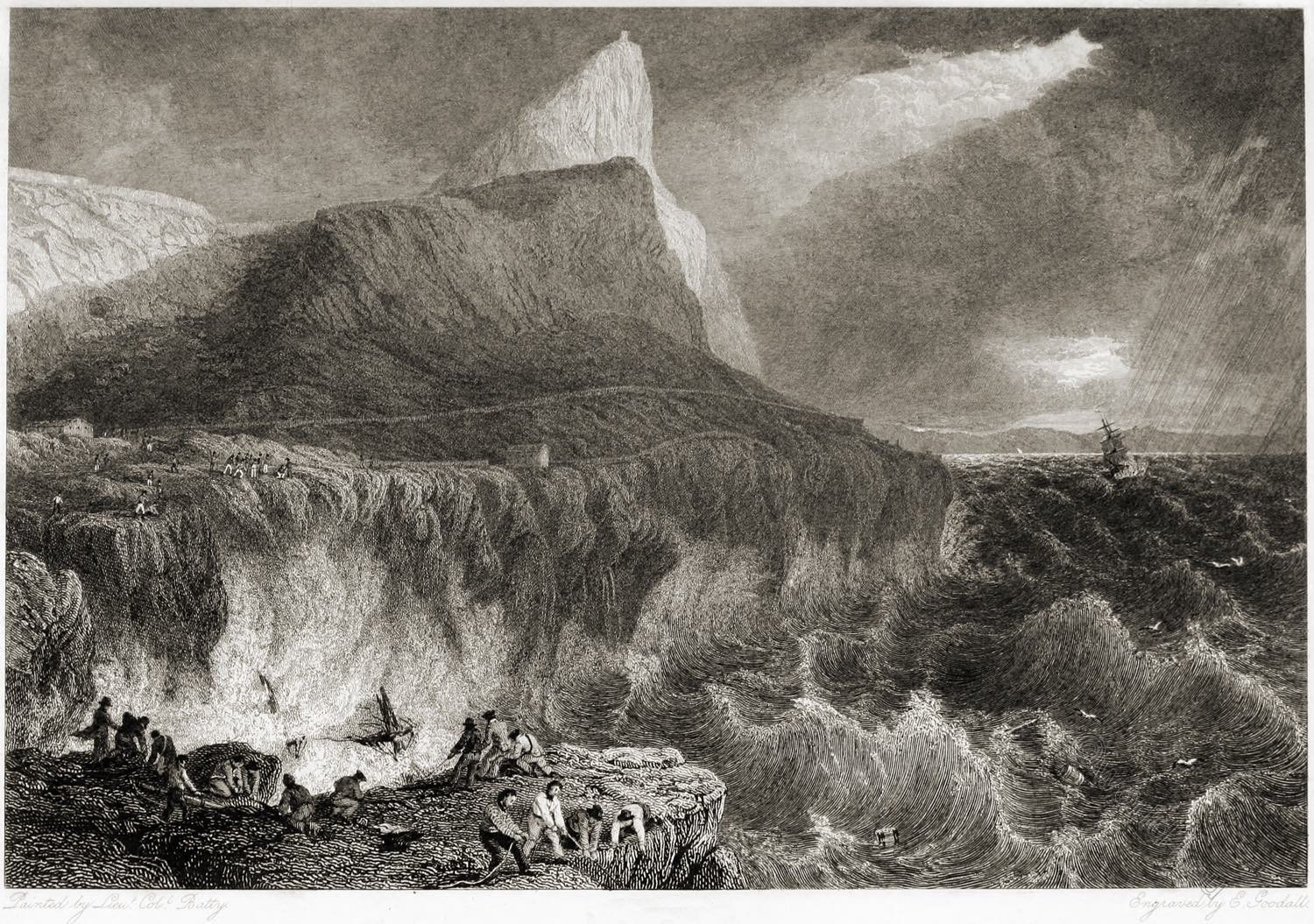
GIBRALTAR. FROM EUROPA POINT.
Having already indicated the situation of Europa Point, we have here a view of the mountain as it appears when seen from that point. The spectator is supposed to be standing on the verge of the cliff, with his back to the Straits; he is, consequently, looking towards the North.
In this position, the mountain assumes the appearance of a high rocky cone. A tower, called O’Hara’s Folly, stands on the peaked summit, and this point marks the termination of the great elevated ridge. Nearer to the spectator, the rough and craggy face of Upper Europa, surmounted by fortifications, opposes a bold, and, apparently, inaccessible front.
Below it are seen the cliffs of Lower Europa, furrowed and worn into a variety of fantastic forms by the repeated storms of many ages. A ridge of rock, extending from the Upper Europa to the cliff’s edge, conceals from the spectator the romantically situated marine villa of Sir George Don, commanding extensive prospects of the Mediterranean, and of the coasts of Spain and Barbary. It affords a delightful retreat during the oppressive heats of the summer months. The blue Mediterranean, at times so placid and beautiful, is subject to violent tempests, which sometimes come on so rapidly and unexpectedly as to require great caution in its navigation.
The effect of one of these storms just clearing off has been chosen as most appropriate to the savage grandeur of this scene. Part of the Spanish coast appears in the distance stretching eastward towards Estapona.
Source: Select views of some of the principal cities of Europe by Robert Batty. London: Moon, Boys, and Graves, 1832.
Continuing
GIBRALTAR.
The Rock, from the Mediterranean Shore.
The Old Mole, from the Anchorage.
Gibraltar, from above Camp Bay.
Gibraltar, from Europa Point.

